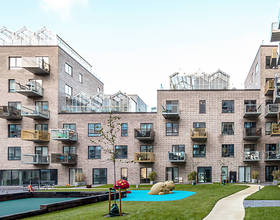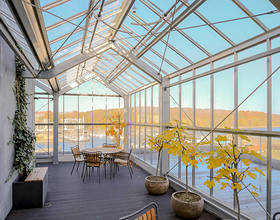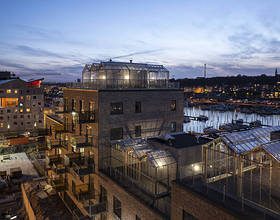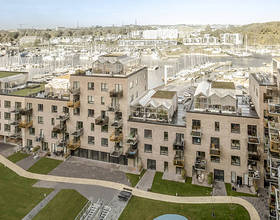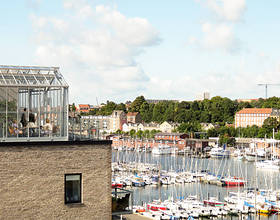HARBOR HOUSES
-
Common greenhouses on the roof tops, adjacent terraces overlooking the bay of Aarhus and a sheltered green courtyard. These are the essence of the Harbour Houses, a residential complex that breaks with both the port’s massive scale and its present iconic building tendencies.
The simple building design benefits from shared greenhouses on the roof, varied building heights and sustainable initiatives that make the complex robust and future-proof.
The structure adapts to its complex context that on one hand consists of a large building scale and on the other a smaller and more intimate scale with a lively maritime atmosphere.
Placing the building volumes along the edge of the site proved to be highly appropriate for the location. It gathers the dwellings around a large courtyard sheltered from the wind and creates the best sun and daylight conditions for the apartments.
The complex is built predominantly in brick and drops in overall height towards the water and the marina. In addition, the building structure is subdivided into smaller buildings, marked by varying heights and subtle changes in the facade expression. The sub-division into smaller 'houses' relates to the human scale and creates affinities between the residents and the individual house. The sunny roof surfaces are furnished with greenhouses, common areas and living terraces with excellent views of the city, forest and bay.
The settlement is a ‘zero-energy building,’ which, with its solar panels and greenhouses, takes advanced steps toward meeting future energy requirements. Among the sustainable initiatives are thermal heating, hybrid panels combining solar panels and solar collectors, heat pumps and energy wells as well as collection of grey wastewater - together making up almost 60 % of the building’s energy consumption.
Photo credits: Helene Høyer Mikkelsen.
1870 Projects


